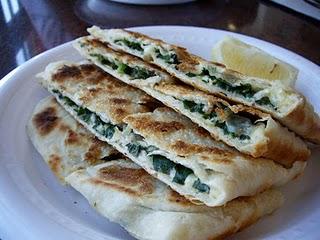As a lawyer in Los Angeles, I rarely got home from work with time or energy to make an actual meal. It was usually a Lean Cuisine frozen dinner at 9 PM. I was pretty thin back then. Turns out working yourself to the brink of exhaustion and not having time to eat is an effective weight loss plan.
When I lived in NY I had more free time and more appetite, but I was also a short walk from the Fairway supermarket. Fairway draws shoppers from all over the city. In addition to the excellent produce, imported cheeses and gourmet condiments, Fairway has a large selection of freshly made meals. All I had to do was heat them in the microwave for a few minutes. Why bother to buy all those ingredients and do all that work when Fairway could do it better?
Now that I live in Turkey I’ve had to find other ways to feed myself; prepared foods are a rarity. Of course, there are many opportunities to eat out. This is an especially good idea at lunchtime, when traditional restaurants offer a daily menu consisting of soup, salad, yoghurt, rice or pasta and a meat/fish/chicken or vegetarian entrée. When I was taking Turkish lessons downtown, my classmate Tatiana and I would usually go to one of these “Ev Yemekleri” (home food places) after class for their daily menu. These meals typically cost between 5-10 TL ( 4-7 dollars). When you eat a complete meal like that for lunch it’s easy to settle for a sandwich at dinner.
There are also several good places to eat in my neighborhood. My default restaurant is Bienka. They have everything from traditional Turkish dishes like kofte (grilled meatballs), pilav and piyaz (beans in tomato sauce), to “Italian” pasta dishes, to meat and chicken entrees of mysterious origin (like their “stroganoffs” - meat or chicken with a sauce unrelated to actual stroganoff). Anyone can find something to eat there, and the fresh ingredients make all the dishes taste good even if they bear no relation to what they’re called.
Another local spot I like is Twilight Cafe. They actually have a poster (in Turkish) of the movie hanging up inside. And I hadn’t even made that connection. But I forgive them because they have the best gozleme in town. Gozleme are like French savory crepes, but a bit firmer. They’re also square instead of round, folded over and eaten like a sandwich. They’re usually available filled with spinach, peynir (feta), Kiyma (minced meat), Kasar (mild yellow chess) or potatoes. You’ll find them at most stops on long bus rides, always prepared by little old ladies wearing headscarves and traditional village attire (shalvar or long skirt, long sleeved shirt, long crocheted vest). The lady who makes the gozleme at Twilight told me she’d had a dream about me. The waiter there said he could fix my broken heater. That’s what happens here when you go someplace more than once; you become family.

Gozleme
Of course I do occasionally cook an actual meal for myself. I’ve been gradually figuring out the easiest way to do this. One of the most useful short-cut ingredients is Knorr soup mix. The mushroom soup is particularly versatile: Add fresh mushrooms and nutmeg to fettucini for an Italian style “ai funghi” or tuna and peas for a casserole. Adding frozen kofte makes a nice Swedish meatball dish. Mmm, just like Lean Cuisine used to make!
Another Ellen-proof recipe is to buy pre-seasoned chicken pieces and bake them with olive oil and tomato or red pepper paste for about half an hour. This is surprisingly good, especially with Sehirli Pilav, for which there is unfortunately no short-cut. (But I have to wait for the chicken to cook anyway, so it’s no big deal.) This involves sautéing the sehri (small pieces of pasta), washing the rice, adding the rice to the sehri, adding boiling water to the rice, cooking for 10 minutes or so and then “brewing” by putting a paper towel over the rice for 5 minutes. This is more trouble than I’d ever thought I’d go to for rice, but it really does taste better this way.
The traditional Turkish manti (tortolini-like pasta filled with minced lamb) are also widely available frozen or dried. They’re served with a sauce of yoghurt, butter and mint. Couldn’t be easier. Be warned though, Turks tend to overcook their pasta. Al dente preparation is not appreciated. This is probably why Mahsun says “please don’t cook” when I invite him and Nazli for dinner.

